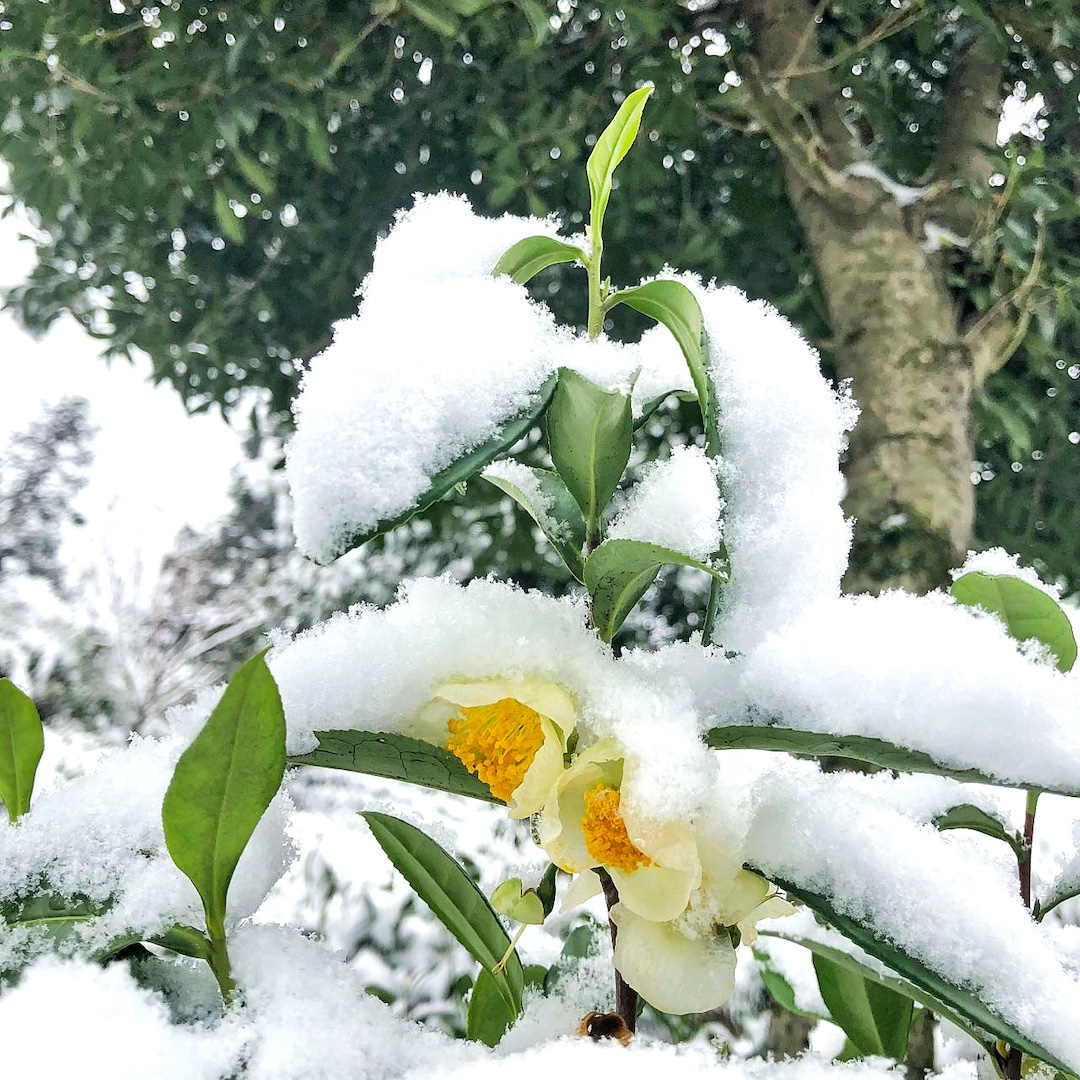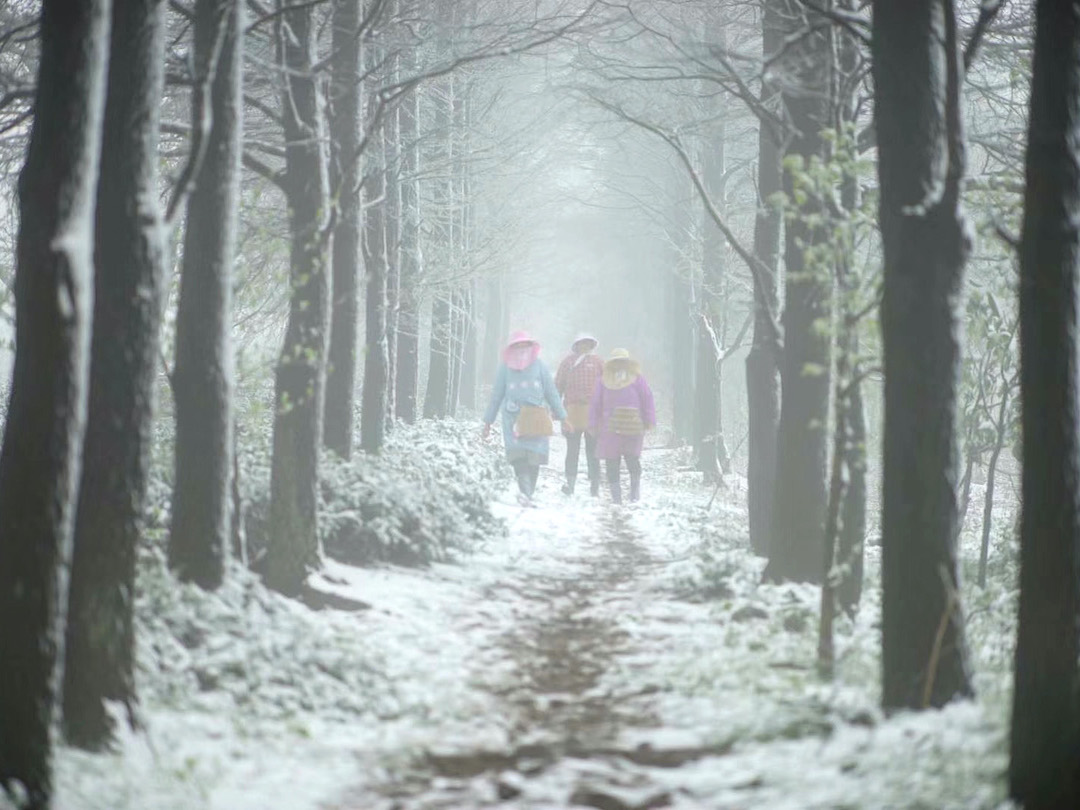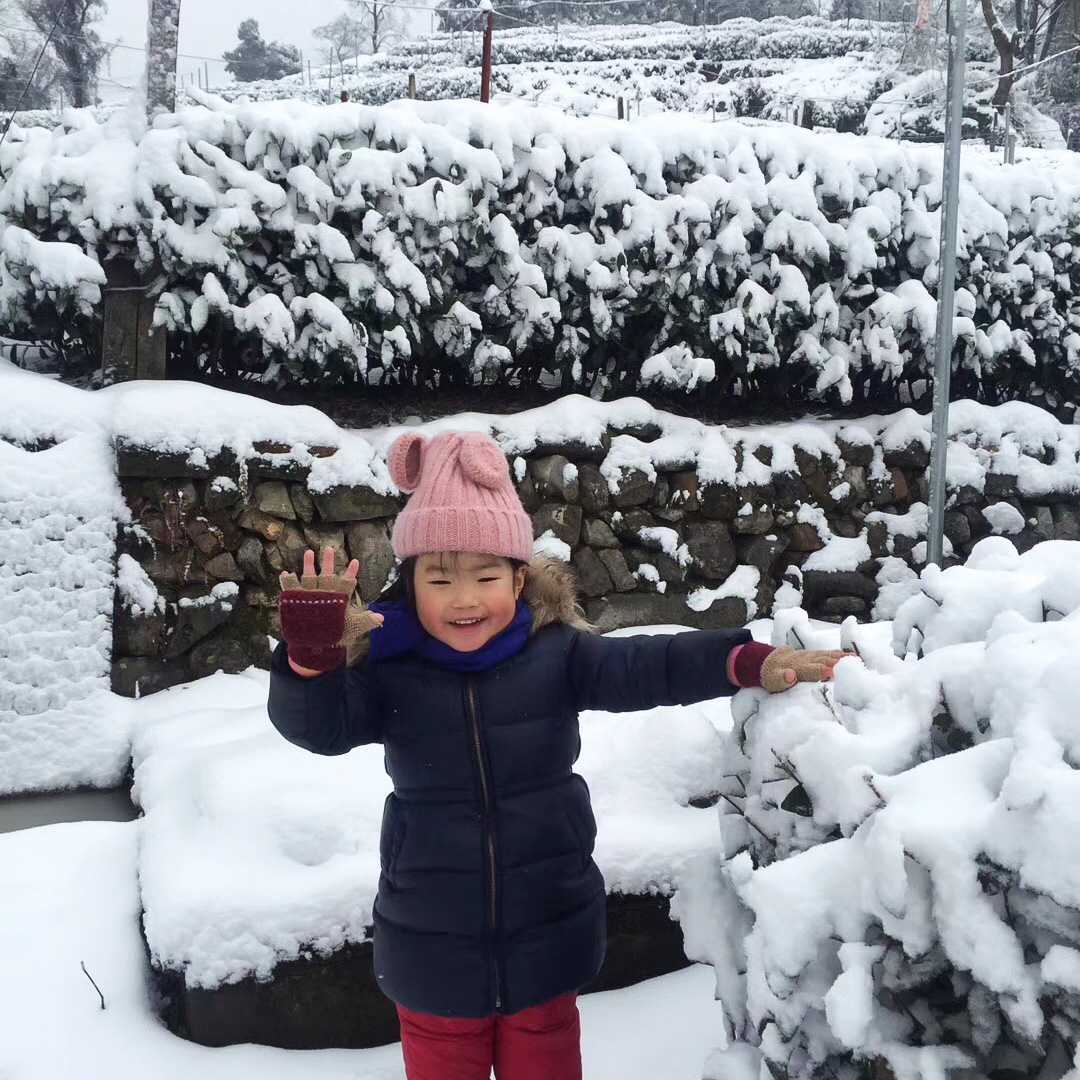Newsletter Archive Feb. 10, 2023

As cascades of snow and freezing temperatures hit China’s tea regions these past few weeks, our phones lit up with pictures from our producers. Their familiar tea gardens are now a totally different landscape, one entirely dressed in white.
It’s cold out there.
Rather than curse the cold, we’re going to celebrate it. This weekend, taste teas from chilly regions and cold-loving bushes. The lineup includes Late Spring Mogan Green, Lu’an Gua Pian, Ming Qian Anji Baicha, and Mengding Maofeng – all green teas with characters made unique by the long, cold winter.
Sustained low temperatures is not necessarily a bad thing for tea. In fact, along with the cold comes flavor.
Tea bushes respond to cold weather with a richness of sweet amino acids in their leaves, as well as fragrant volatile compounds like geraniol (the scent of geraniums), linalool (of lavender), and methyl salicylate (of wintergreen). Research shows that tea bushes make these metabolic compounds when the weather is cold not only to protect themselves, but also to signal to other bushes to prepare their cold defenses. It’s a happy coincidence that these metabolites make delicious tea leaves, too.

The cold can be dangerous to tea plants, too, of course. Our Anji Baicha producer, Yu Shunhu, said temperatures in his garden have hovered around freezing since late December. Fortunately, they’ve not not dipped below -10°Celsius (14°F), which is damaging to tea plants.
His tea plants are also still deep in their winter dormancy, at the peak of cold acclimation. The vulnerable young leaves of the spring have not come yet, so these heaps of snow are not a threat, but a boon. As the snow melts, it feeds the tea bushes and their undergrowth. A good freeze also keeps the insect population in check, meaning less damage later in the year.
If cooler temperatures hold out into early the spring, we could be in for a treat. In years past, we’ve found that a long and cold start to spring means concentrated flavor in the early leaves – a quality that Lu’an Gua Pian depends on. It means the cold-dependent albescent phase that turns the leaves of the Baiye #1 cultivar white will be prolonged, giving excellent Anji Baicha. It also means that high elevation and forested gardens like Moganshan’s mountain-top garden will probably yield later, but give supremely fragrant tea.
We were fortunate that many producers had good weather last year, although they had tense lockdown conditions. So we’ll enjoy these teas while they last and hope for the best as this year’s winter runs its course.
Stay warm out there!

